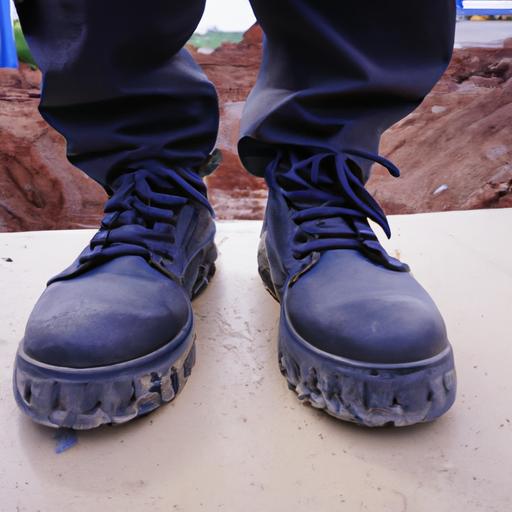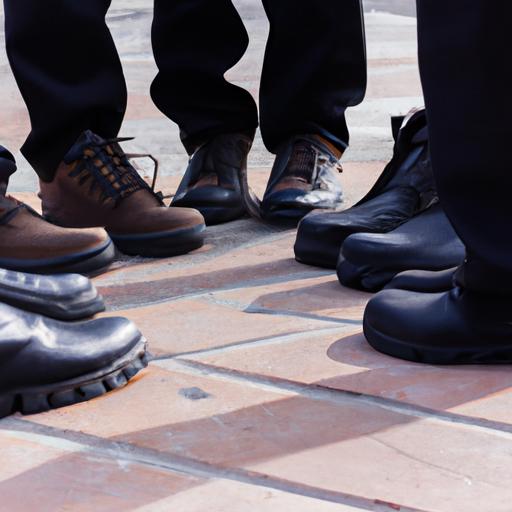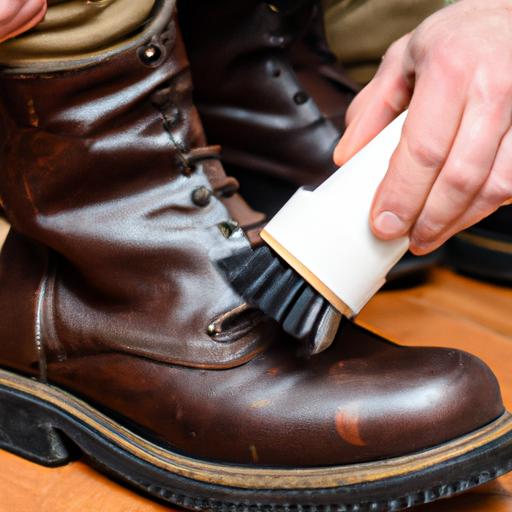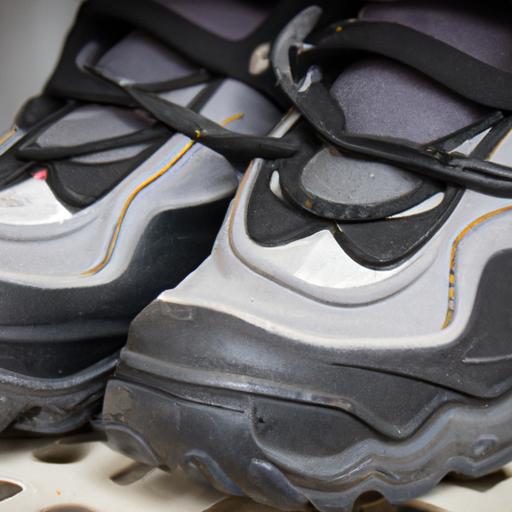Did you know that every year, millions of workers suffer from foot injuries in the workplace? These injuries not only cause pain and suffering but also result in lost productivity and increased medical expenses. That’s where safety shoes come into play. In this article, we will delve into the crucial role safety shoes play in ensuring workplace safety and why investing in the right footwear is paramount for your well-being.
A. Brief Overview of the importance of safety shoes
When we think about workplace safety, we often focus on helmets, gloves, and goggles, neglecting our feet. However, our feet are just as vulnerable to hazards as any other part of our body, if not more. Safety shoes are specially designed and manufactured to protect our feet from a wide range of potential dangers in various work environments.
B. Explanation of How Safety Shoes Play a Vital Role in Workplace Safety
Imagine working in a construction site, where heavy objects are lifted, sharp materials are scattered, and electrical wiring is exposed. Without suitable safety shoes, a simple misstep can lead to severe injuries such as crushed toes, punctures, or even electric shocks. Safety shoes act as a sturdy shield, guarding against these dangers and minimizing the risk of life-altering accidents.
Moreover, safety shoes are not only about protection. They also enhance overall foot health and comfort, allowing you to perform optimally throughout the day. By providing proper support, stability, and cushioning, safety shoes reduce fatigue, alleviate discomfort, and prevent long-term foot problems like plantar fasciitis or flat feet.
In the next section, we will explore the myriad benefits of wearing safety shoes, ranging from protection against workplace hazards to maintaining foot health and comfort. So, let’s dive in and discover how safety shoes can be your trusted companion in the quest for a safe and secure workplace.
Benefits of Wearing Safety Shoes
A. Protection against Workplace Hazards
When it comes to ensuring workplace safety, safety shoes are an indispensable asset. Let’s explore the various ways in which these sturdy footwear options shield your feet from potential hazards.
1. Preventing Foot Injuries
In high-risk industries like construction or manufacturing, foot injuries are all too common. Safety shoes with reinforced toe caps act as a protective barrier, significantly reducing the risk of crushed toes or punctures from sharp objects. By providing a robust layer of defense, safety shoes become your reliable guardian against potential accidents.
2. Shielding against Falling Objects
Working in an environment where objects are lifted or stacked overhead can be perilous. However, safety shoes with impact-resistant features safeguard your feet from falling objects. With a durable construction and sturdy materials, these shoes absorb the impact, preventing serious injuries and ensuring your feet remain unscathed.
3. Resisting Electrical Hazards
Electricity is a silent danger lurking in various workplaces. Safety shoes designed with electrical hazard protection provide insulation against electric shocks. By dissipating static electricity and offering resistance to electrical currents, these shoes minimize the risk of life-threatening accidents, making them essential for those working with live wires or in environments prone to electrical hazards.
B. Enhancing Overall Foot Health and Comfort
Safety shoes go beyond just protection; they prioritize your foot health and comfort, allowing you to perform at your best throughout the day.
1. Providing Proper Support and Stability
Long hours on your feet can take a toll on your body. Safety shoes are engineered to provide excellent arch support and stability, reducing the strain on your feet and preventing discomfort. With features like cushioned insoles and ergonomic designs, these shoes maintain proper alignment, reducing the risk of fatigue-related accidents.
2. Reducing Fatigue and Discomfort
Safety shoes are equipped with shock-absorbing properties, dispersing the impact of each step and reducing the strain on your joints. By minimizing fatigue and discomfort, these shoes enhance your productivity and focus, allowing you to tackle challenging tasks with ease.
3. Preventing Long-Term Foot Problems
Neglecting foot health can lead to long-term issues such as plantar fasciitis, flat feet, or chronic pain. Safety shoes provide the necessary support and cushioning to prevent these problems from arising. By promoting proper foot alignment and reducing pressure points, safety shoes become your proactive defense against future foot ailments.
In the next section, we will dive into the legal requirements surrounding safety shoes, shedding light on the importance of compliance and the potential consequences of non-compliance. So, let’s continue our journey towards a safer workplace.
Legal Requirements for Safety Shoes
A. Overview of Occupational Safety Regulations
In order to ensure workplace safety, governments and regulatory bodies have implemented occupational safety regulations that outline the use of appropriate protective equipment, including safety shoes. These regulations aim to minimize workplace accidents, injuries, and liabilities, emphasizing the importance of safeguarding employees’ feet.
B. Different Industries and Occupations that Mandate Safety Shoe Usage
While safety shoe requirements may vary across industries and job roles, several sectors have established strict guidelines regarding their usage. Industries such as construction, manufacturing, mining, logistics, and healthcare often mandate the use of safety shoes due to the inherent risks associated with these fields. Additionally, occupations that involve heavy machinery operation, handling hazardous materials, or working in physically demanding environments typically require the use of safety shoes as a preventive measure.
C. Consequences of Non-Compliance with Safety Shoe Requirements
Non-compliance with safety shoe requirements can have serious implications for both employees and employers. From a legal standpoint, failing to adhere to the mandated safety regulations can result in penalties, fines, and legal repercussions. In addition, employers may face increased workers’ compensation claims and lawsuits if accidents occur due to inadequate footwear.
On the other hand, employees who neglect to wear safety shoes put themselves at a higher risk of sustaining foot injuries, which can lead to pain, disability, and potential loss of income. Moreover, the recovery process can be lengthy, impacting productivity and overall well-being.
Understanding the legal obligations and consequences related to safety shoes is crucial for both employers and employees. By complying with these requirements, employers demonstrate their commitment to creating a safe work environment, while employees prioritize their own well-being and contribute to a healthier and more secure workplace.
In the next section, we will explore how to choose the right safety shoes that cater to your specific needs and workplace hazards. So, let’s move forward and find the perfect fit for your feet!
Choosing the Right Safety Shoes
When it comes to safety shoes, one size does not fit all. To ensure maximum protection and comfort, it is essential to choose the right pair that caters to your specific needs. Let’s explore the key factors to consider when selecting safety shoes.
A. Understanding Different Safety Shoe Features
-
Protective Toe Caps: One of the most critical features of safety shoes is the presence of protective toe caps. These caps, typically made of steel, composite materials, or aluminum, offer reliable protection against heavy objects that may accidentally fall or be dropped on your feet. They act as a barrier, shielding your toes from potential fractures or amputations.
-
Slip-Resistant Soles: Workplace floors can be treacherous, especially when wet or oily. Slip-resistant soles, often made of rubber or specialized materials, provide enhanced traction and grip, reducing the risk of slips, trips, and falls. This feature is particularly crucial for occupations that involve working on slippery surfaces or in environments prone to spills.
-
Electrical Hazard Protection: For individuals working around electricity or electrical equipment, safety shoes with electrical hazard protection are a must. These shoes are designed with insulating materials that prevent electrical currents from passing through the footwear, safeguarding you against potential shocks and electrocution.
B. Assessing Workplace Hazards to Select Appropriate Safety Shoes
Different work environments pose unique risks and hazards. Before choosing safety shoes, it is crucial to conduct a thorough assessment of your workplace. Consider factors such as falling objects, sharp materials, chemicals, electrical hazards, or extreme temperatures. By understanding the specific risks you face, you can select safety shoes that offer the appropriate level of protection.
C. Considering Comfort, Fit, and Durability When Choosing Safety Shoes
While safety is paramount, comfort should not be compromised. Look for safety shoes that provide a comfortable fit, adequate arch support, and cushioning. Ill-fitting shoes can lead to discomfort, blisters, or even foot conditions like bunions. Additionally, prioritize durability to ensure your safety shoes withstand the demands of your work environment and provide long-lasting protection.
In the next section, we will discuss the importance of regular maintenance and care for your safety shoes, ensuring their longevity and optimal performance. So, let’s proceed to Section V and learn how to keep your safety shoes in top shape.
Maintenance and Care of Safety Shoes
A. Importance of Regular Inspections and Maintenance
Just like any other piece of equipment, safety shoes require regular inspections and maintenance to ensure their effectiveness and longevity. By incorporating a simple routine into your work-life, you can significantly extend the lifespan of your safety shoes and keep them in optimal condition.
Regularly inspecting your safety shoes allows you to identify any potential issues or signs of wear and tear. Look for cracks, loose stitching, or damaged parts that may compromise the shoe’s protective features. Additionally, check the soles for wear and ensure they still provide adequate slip resistance. Remember, prevention is key, and early detection of any problems can prevent accidents and injuries.
B. Cleaning and Storage Tips for Extending the Lifespan of Safety Shoes
Proper cleaning and storage are essential for maintaining the functionality and appearance of your safety shoes. Start by removing any loose dirt or debris by gently brushing them off. For more stubborn stains, use a mild soap or specialized shoe cleaner that won’t damage the materials. Avoid harsh chemicals or abrasive scrubbing, as they can weaken the shoe’s construction.
After cleaning, allow your safety shoes to air dry naturally at room temperature. Avoid direct heat sources like radiators or sunlight, as excessive heat can cause the materials to deform or crack. Additionally, stuffing your shoes with crumpled newspaper can help absorb moisture and maintain their shape during the drying process.
When storing your safety shoes, keep them in a cool, dry place away from direct sunlight. Storing them properly not only prevents damage but also helps preserve their protective properties. Avoid stacking heavy objects on top of them, as this can cause unnecessary pressure and deform the shoe’s structure.
C. Recognizing Signs of Wear and Tear and When to Replace Safety Shoes
No matter how well you maintain your safety shoes, there comes a time when they need to be replaced. Pay attention to signs of significant wear, such as worn-out soles, flattened cushioning, or a loss of flexibility. These are indications that the protective features of your safety shoes may have diminished, compromising their ability to keep you safe.
Remember, safety shoes are an investment in your well-being, and worn-out shoes can no longer provide adequate protection. It’s crucial to replace them promptly to ensure you’re adequately safeguarded on the job. Regularly evaluate the condition of your safety shoes and consult with your employer or a safety professional to determine when it’s time for a replacement.
In the next section, we’ll conclude our exploration of the importance of safety shoes, summarizing their significance and encouraging you to prioritize workplace safety by investing in the right footwear. So, let’s move forward and wrap up this enlightening journey together.
Conclusion
In conclusion, the importance of safety shoes cannot be overstated when it comes to ensuring workplace safety. These specialized footwear not only protect our feet from various hazards but also contribute to our overall well-being and comfort. By investing in high-quality safety shoes, we can significantly reduce the risk of workplace accidents, injuries, and long-term foot problems.
Remember, safety shoes are not just a compliance requirement; they are an investment in your safety and productivity. Whether you work in construction, manufacturing, healthcare, or any other industry that poses potential risks to your feet, wearing the appropriate safety footwear is essential.
So, don’t compromise on your safety. Take the time to assess your workplace hazards, understand the regulatory requirements, and choose safety shoes that provide the necessary protection and comfort for your specific job. Regularly inspect and maintain your safety shoes, replacing them when signs of wear and tear become apparent.
By prioritizing the importance of safety shoes, we can create a culture of safety in our workplaces, where accidents are minimized, and employees can focus on their tasks with confidence. Let’s step into a safer and more secure future, one pair of safety shoes at a time.
Remember, your feet deserve the best protection. Invest in safety shoes today, and take that vital step towards a safer and healthier work environment for yourself and your colleagues.
Stay safe, stay protected, and keep walking with confidence!



